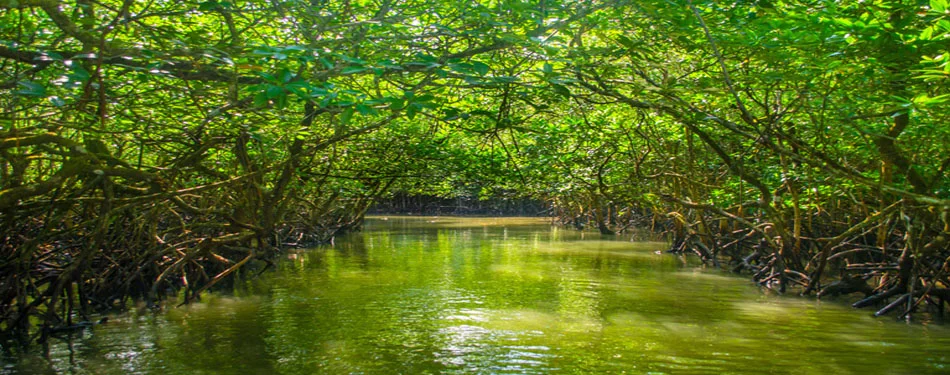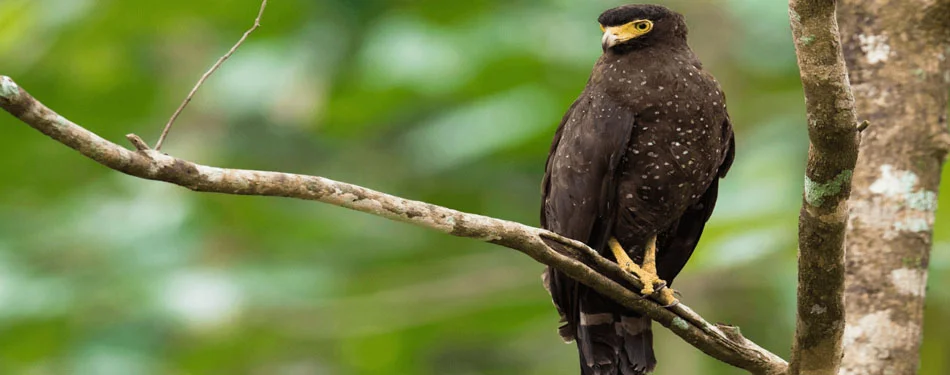Andaman Islands: The Intriguing Flora and Fauna of the Mangrove Ecosystems

The Andaman Islands, an archipelago in the Bay of Bengal, are not only famous for their
picturesque beaches but also for their diverse ecosystems. Among these, the mangrove
forests stand out as ecological powerhouses. These coastal habitats are important for
the environmental balance, supporting a variety of flora and fauna that contribute to
the uniqueness of the region. This exploration into the Andaman mangrove ecosystems will
go into their importance, the species they harbor, and how you can experience these
wonders firsthand through various tours.
Exploring the Richness of the Mangrove Ecosystems
The mangrove forests in the Andaman Islands are important for maintaining ecological
balance. These unique wetland ecosystems are characterized by mangrove trees, which are
specially adapted to saline coastal waters. In the Andamans, these forests not only
prevent soil erosion but also provide a habitat for numerous species. The roots of
mangrove trees are particularly noteworthy as they form intricate networks that offer
shelter and breeding grounds for various marine and terrestrial species.
Flora and Fauna of Andaman Mangroves
The flora and fauna of Andaman's mangrove ecosystems are exceptionally diverse. The
mangroves are home to a variety of plant species, primarily the uniquely adapted
mangrove trees. These trees have evolved to handle the salty environment and unstable,
oxygen-poor soil conditions. The fauna here includes a range of species from fish and
crustaceans to birds and mammals. Famous among these are the mudskippers, mangrove
crabs, and the saltwater crocodile.
Flora of the Andaman Mangroves
1. Red Mangrove (Rhizophora spp.): Known for their distinctive stilt
roots, red mangroves are among the most common species found in the Andaman mangroves.
These roots provide stability in the soft, muddy substrate and are important for the
ecosystem's health.
2. Black Mangrove (Avicennia spp.): Black mangroves are recognized by
their pneumatophores, or aerial roots, which protrude from the soil to facilitate gas
exchange. These trees are well-adapted to high salinity and are often found in the upper
intertidal zones.
3. White Mangrove (Laguncularia racemosa): White mangroves typically
occupy higher elevations within the mangrove forest. They have peg-like pneumatophores
and show a high tolerance to varying salinity levels.
Fauna of the Andaman Mangroves
1. Mudskippers (Periophthalmus spp.): These amphibious fish are often
seen
clambering on the mangrove roots and mudflats. Mudskippers are capable of breathing
through their skin and mouth lining, allowing them to survive both in and out of water.
2. Mangrove Crabs (Scylla serrata): Mangrove crabs play an important
role
in the ecosystem by aerating the soil through their burrowing activities. They also help
decompose leaf litter, recycling nutrients back into the environment.
3. Saltwater Crocodile (Crocodylus porosus): The saltwater crocodile is
one
of the top predators in the Andaman mangroves. These formidable reptiles can grow up to
seven meters long and are known for their secrecy and powerful hunting abilities.
4. Bird Species: The Andaman mangroves are a haven for birdwatchers.
Species such as the Andaman serpent eagle, black-capped kingfisher, and white-bellied
sea eagle can often be spotted. Birdwatching in Havelock Island mangrove forests is
particularly rewarding, offering sightings of these and many other avian species.
Key Locations to Explore Mangrove Ecosystems
Neil Island Mangrove Swamps Andaman

Neil Island offers a quieter mangrove experience compared to its more famous
counterparts. The mangrove swamps here are less traveled, making them ideal for those
seeking peaceful and a more close experience with nature. The serene paddle through the
mangrove creeks is not only calming but also enlightening, as one gets to observe the
intricate life forms that inhabit these waters and their surrounding areas.
Birdwatching in Havelock Island Mangrove Forests

Havelock Island is another gem in the Andamans that is famous for its diving spots and
sandy beaches. However, the mangrove forests here offer a different kind of
treasure—excellent birdwatching opportunities. The canopy of the dense mangroves is
often filled with the sounds of various bird species. The mangroves act as crucial
feeding and nesting sites for these birds, making Havelock a must-visit for
birdwatchers.
Baratang Island Mangrove Boat Tours Andaman

Baratang Island is perhaps one of the most adventurous places in the Andamans to explore
mangroves. The boat tours offered here take you through narrow creeks surrounded by
thick mangrove forests, where sunlight barely touches the water. These tours not only
provide a chance to witness the thriving ecosystem but also offer opportunities to see
the famous limestone caves and mud volcanoes, making it a holistic nature tour.
Mangrove Ecosystem Tours in Port Blair Andaman

Port Blair, the capital of the Andaman and Nicobar Islands, also offers tours to explore
the mangrove ecosystems. These tours are designed to educate tourists about the
ecological importance of mangroves and the efforts being made to conserve them. The
mangrove ecosystem tours in Port Blair typically involve kayaking or boat rides,
providing an up-close experience of the flora and fauna that make these ecosystems their
home.
Conservation Efforts and the Future
The conservation of mangrove ecosystems in the Andaman Islands is critical. These
ecosystems are not only important for biodiversity but also for the protection of
coastlines and the livelihoods of local communities. Efforts are being made to educate
locals and tourists about the importance of preserving these habitats. Sustainable
tourism practices are encouraged, and several areas have been designated as protected to
prevent over-exploitation.
Conclusion
The mangrove ecosystems of the Andaman Islands offer a unique glimpse into the complex
and vibrant life that coastal regions support. Whether it’s through birdwatching in
Havelock Island, exploring Neil Island’s tranquil swamps, or embarking on an adventurous
boat tour in Baratang, these ecosystems promise enriching experiences that are both
educational and unforgettable. As we continue to explore and understand these
ecosystems, it becomes important that we also commit to their conservation, ensuring
that the flora and fauna of Andaman continue to thrive for generations to come.




